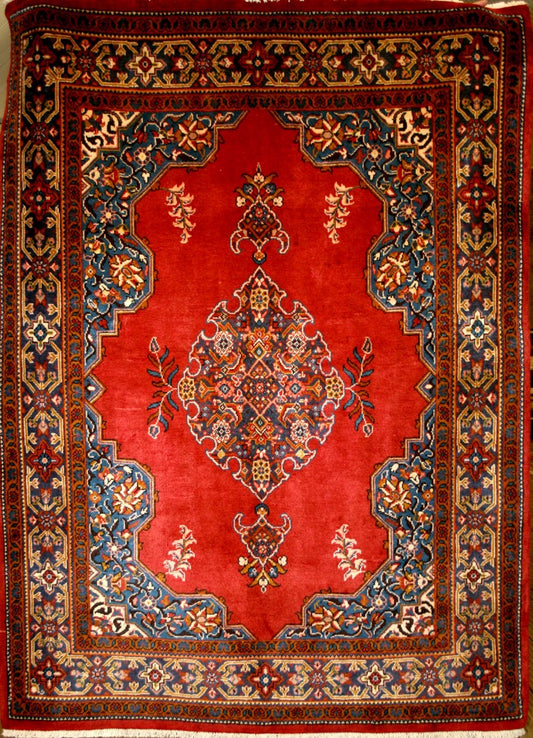Sabzevar Rug History & Origin Guide
Delving into the World of Sabzevar Rugs: A Journey through Art, History, and Culture
Step into the enchanting realm of Sabzevar rugs and uncover the rich history, intricate designs, and time-honoured traditions that define this remarkable art form. Renowned for their unique colour combinations and motifs, these rugs are a testament to the enduring craftsmanship of the weavers of Sabzevar, a city steeped in history and culture in northeastern Iran.
Sabzevar: A Historical Overview
Sabzevar, located in the Khorasan Province of Iran, boasts a long and illustrious history dating back to the early Islamic era. Known in the past as "Beihagh" (Bayhaq), Sabzevar has been a significant centre for culture, education, and rug weaving over the centuries, producing rugs that are prized for their distinct aesthetic and high-quality materials.
Fabrics and Techniques of Sabzevar Rugs
Sabzevar rugs are primarily crafted from locally sourced wool, known for its durability and plush texture. The foundations, or warps and wefts, are usually made from cotton, providing strength and structure to the rugs. The Persian (Senneh) knot is commonly employed, allowing for a high knot density and detailed designs.
Colour and Dyes: The Sabzevar Palette
The colour palette of Sabzevar rugs is distinctive and varied, with a strong emphasis on natural dyes. Typical hues include deep reds, blues, and browns, often contrasted with lighter tones of ivory or beige. These colours are derived from plant and mineral sources, ensuring the rugs' vibrancy and colourfastness over time.
Patterns and Motifs: The Artistic Expression of Sabzevar Rugs
Sabzevar rugs are celebrated for their intricate patterns and striking motifs, which often reflect the region's rich history and cultural influences. Some common design elements found in these rugs include:
- Geometric patterns: A nod to the region's Islamic heritage and architectural influences
- Floral motifs: Representing the lush landscapes and gardens of the region
- Central medallions: A common feature in Persian rugs, symbolizing unity and balance
These motifs are carefully woven together to create a visually stunning tapestry that tells a story of the weaver's experiences and surroundings.
Climate and Weather in Sabzevar
Sabzevar experiences a semi-arid climate, with hot summers and cold winters. The city's weather conditions have influenced the rug-making process, with the weavers adapting their techniques and materials to suit the local climate, ensuring the rugs' longevity and resilience.
Visiting Sabzevar: A Cultural and Historical Experience
Travelling to Sabzevar offers a unique opportunity to delve into the region's rich history and experience its vibrant culture first-hand. The city is home to numerous historical sites, including the Khargerd Minaret, the Grand Mosque, and the ancient ruins of Bayhaq. Rug enthusiasts can also visit local workshops and markets to learn more about the rug-making process and perhaps find a beautiful Sabzevar rug to cherish.
Exploring Nearby Rug-Producing Regions
In addition to Sabzevar, the Khorasan Province boasts other notable rug-making centres, such as Mashhad and Nishapur. Each region offers its distinct rug styles and techniques, adding to the diverse tapestry of Persian rug artistry.
A Sabzevar rug is more than just a decorative item; it represents the culmination of centuries of tradition, craftsmanship, and cultural expression. By exploring the history, techniques, and motifs of these beautiful rugs, one gains a deeper appreciation for their enduring artistry and the rich heritage they embody.
Browse Our Current Selection of Sabzevar Rugs
-
Persian Sabzevar Rug
Regular price £1,395.00Regular priceUnit price per

